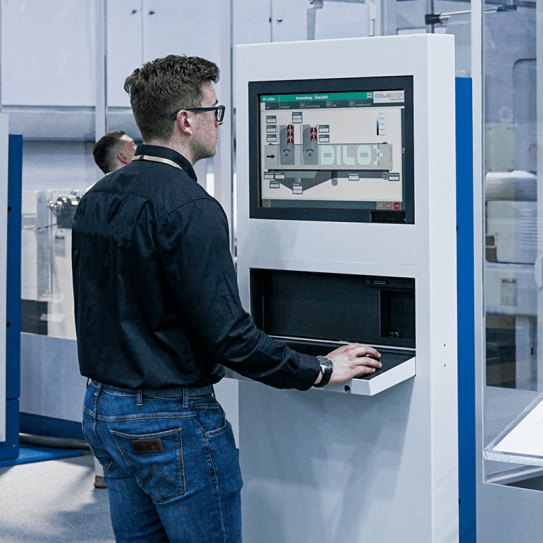
B2B E-Commerce: Offering a Personalized Omnichannel Experience
One of the biggest goals for B2B companies today is to create a unified customer experience that is both meaningful and personalized. Simply engaging with customers across different channels is not enough; the data and interaction across the channels also need to be continuously aligned.
All your channels need to exchange data in real-time to keep the customer conversation going and relevant to customer needs.
Improving the customer experience to grow online revenue has been the mantra for many years. Before, it was known as user experience (UX), which describes the usability, speed and ease of doing a business function like ordering. Today, customer experience encompasses omnichannel, personalization, complexity and branding. How do you put everything together? Where do you even start?
Omnichannel: the rule of thirds
According to McKinsey’s B2B Pulse Survey done in November 2021, B2B buyers are embracing the new norm of omnichannel. At different stages of the buying journey, B2B buyers use three groups of channels according to a “rule of thirds”. This is an even mix of traditional sales (meetings), remote interactions (phone and videoconferencing) and digital self-service (e-commerce). This implies that one channel simply isn’t enough to meet customer needs, nor that e-commerce can be ignored.
Creating an omnichannel experience that combines these three groups of channels involves successfully integrating a myriad of people, processes, technologies and data. Without the right technologies, omnichannel isn’t possible – this requires enabling business processes capable of providing consistent and responsive content, data, and transaction services to all channels whenever your customer needs it. The key to a seamless experience across channels is to identify the customer at each touchpoint and pick up the interaction from where you left it at the previous touchpoint.
B2B Personalization
Once you identify the customer, you can start offering personalized content and recommendations. Putting B2B personalization into practice comes with many snags, however, especially in larger companies where multiple digital initiatives can play in parallel. The organization may be facing new processes and systems, the organization’s digital specialists are busy all the time and the management wonders whether they are not wasting money due to the lack of results. Offering a personalized B2B customer experience across all channels can then become an increasingly distant goal.
The challenge here lies in process thinking. Personalization is not a defined IT project that only requires the implementation of some new tooling. There is much more to it. You are constantly raising a certain standard for your customers. While a personalized email is a good start, the next question should be: how do you ensure a personalized website visit from your newsletter? How do you build a lead score for an automated marketing campaign?
Enabling complexity
While the expectations of B2B buyers have been shaped by their B2C shopping experiences, B2B is a different ball game entirely. Buying processes are longer and have more decision-makers involved, with extensive product lines and customer-specific terms. Wholesalers, for example, can deliver a project order split into separate locations with different sequences of delivery. To make B2B e-commerce work, B2B companies need to work on accommodating their customer needs more and more online.
Branding to differentiate
On top of it all, the offered B2B shopping experiences should be differentiated from your competitors. Getting across who you are and what you stand for is a must, or you’re nothing more than a shopping basket competing on price and availability. Taking your B2B e-commerce to the next level requires you to consider two directions. The first direction is looking at your brand differentiators that create preference and loyalty. How can you make your customers come back even while wielding premium prices? The second is your IT architecture. While a full-suite solution covers most bases with a monolithic approach, your competitors can do the same. A headless or composable architecture, on the other hand, gives you new possibilities to connect systems and services through APIs, enabling you to piece together a differentiated customer experience.
Best practices to address the customer experience challenge
Actively change the business
Creating an optimal experience is not a one-off challenge; it requires continuous attention and improvements. New channels, opportunities for personalization, changing customer wishes and innovative differentiators pop up regularly. Running the business isn’t enough for your organization. Actively changing the business is key. Think about the organization that is needed to embrace change and evolve continuously the way you do business.
Put the customer processes first
Improving the customer experience depends on more than just choosing the right tooling. It's about taking the right steps in the right order, from the operational to the strategic level. The only way to get a grip on this is to start thinking from the perspective of processes, where you put customer processes first. Not only those of your own customers but also those of their customers. Because ultimately, it is business first, which means you need to put the customer first.
Consider the power of silos
The biggest misconception in enabling the connected omnichannel experience is that all silos have to go. Sometimes, they work better separately than put together. This realization starts with the business case for B2B e-commerce, which is often silo-driven: either sales representatives get complaints about the current webshop, or the marketing department wants to target a group of customers with new functionality. That's where you'll immediately notice the us-versus-them thinking that comes with silos. The crux is recognizing that you are jointly responsible for e-commerce success; every link must be strong. Once you realize that silos have value, you can build the organization that delivers the B2B commerce experience your customers expect.

Whitepaper
Overcoming the 4 Key Challenges to your B2B E-Commerce Success
Identify and address the bottlenecks preventing your organization from reaping the maximal benefits of B2B e-commerce.
Customer Case
Read the full case hereIntergamma: from Retailer to Frontrunner
The Dutch company Intergamma is the market leader in the DIY market in the Benelux. Their transformation to omnichannel was challenging, as described by Arthur van Weeren, Manager E-business ICT:
“A few years ago, our customers could only buy do-it-yourself products in the physical stores. We had no online shopping platform, and there was no proper interaction between our website and our stores. That needed to change. We wanted to offer our customers the same experience online as offline.”
Now, customers can place their orders online, as well as check if the items are in stock at all the retail stores.
“This means they never return from the store empty-handed because the item they need is out of stock. And when they are in the brick-and-mortar stores, they can also order from the online stock. This way, they can always make a purchase, no matter where they are. We have evolved from a traditional retailer into a frontrunner.”
Want to learn more about creating a personalized omnichannel experience?
Check out our experience platform services to help you manage and create meaningful experiences that lead to engagement and e-commerce.
This is the sixth blog of our article series on B2B e-commerce. Click here for the next article.
Curious to learn more?
Get in touch to discuss how we can drive your B2B E-commerce success.
Contact Us


